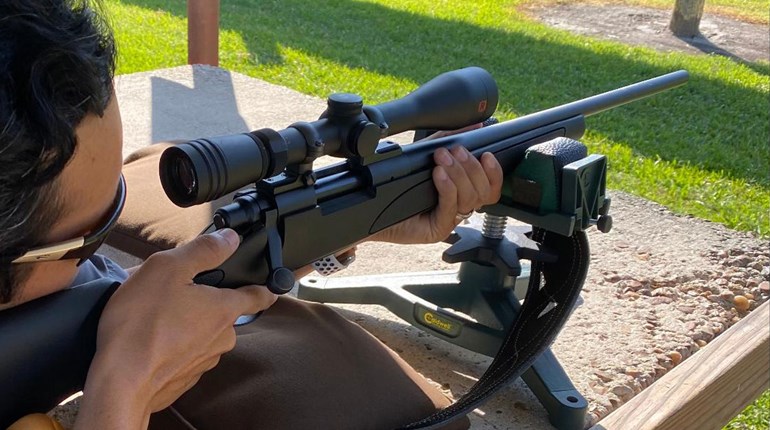
Whitewater rafting is one of the most exciting and exhilarating activities during the spring and summer. To feel the raw power of Mother Nature can be described in one word—incredible! Whitewater rafting can be dangerous, but if you follow some safety rules, this activity can be safe and enjoyable. Unless you are a regular to the sport, it is advisable that you go with an outfitter that employs experienced guides.
The rafts made for whitewater rafting are rubber inflatable boats. Depending on the size, these rafts hold as few as two people to as many as 10 individuals. Usually, each person is tasked with the job of paddling in sync before, during and after entering the rapids as directed, to steer and navigate through the water. The fast water that flows over underwater obstacles are called rapids. If the raft is large enough, there might be passengers sitting on the inside of the cross pontoons that do not have a paddle.
When whitewater rafting, there is usually an individual in charge of calling the actions of the rest of the people in the vessel. Sometimes, the rafts have large oars in the middle of the vessel, which the guide uses to steer the vessel. Other times the guide uses a paddle in the back (stern) of the vessel to steer. Everyone is expected to do his or her part when directed by the guide.
Some of the commands that you might hear are:
- Paddle: Both sides of the raft paddle forward.
- Paddle Hard: This command is usually given to paddle through a rapid.
- Right Side Forward; Left Side Backward; or Left Side Forward; Right Side Backward: Follow the command and paddle as directed. Sometimes the word “hard” is added to these commands if going through the rapids and the guide wants you to paddle fast.
- High Side!: This is one of the most important, and un-natural, commands. This is when your raft is about to hit a large stationary object like a boulder. Your natural tendency is to pull away from “danger.” When this command is heard everyone in the raft is supposed to jump to the side of the raft that is towards the boulder or “danger.” This is a very important command because it prevents the raft from flipping over and dumping everyone into the rapids, which causes a very dangerous condition. When everyone in the raft leaps toward the boulder, it raises the leeward side of the raft so that it does not take on water. Most guides use the command “High Side!” but I have been with some guides that use the command “Kiss the Rock!”
It is not uncommon for one or more of the passengers to fall overboard while going through a rapid. I have seen individuals sitting on the rear or stern of the raft catapulted through the air and into the rapid, if the rapids are big enough. If this happens, do not panic. The guide will eventually get you back into the raft. Most of the time, the guide will get you back into the raft while you are still going through the rapid. Other times, you may have to wait until you and the raft pass through the rapids.
If you find yourself separated from the raft while going through the rapids, there are things you need to do to stay safe. First, never fight against the rapids and try to stand up. This could get your foot lodged in rocks or debris, causing you to slip underwater and possibly drown. Rather, keep your face up, put your feet together and pick your toes up and out of the water, pointing downstream. This way you can use your feet to push off any obstacles. To keep from bouncing off objects under the water, arch your back so your rear end is up. Lastly, your arms need to be extended straight out to the side, making a “T,” with your palms down. This will allow you to steer yourself to the shoreline or guide yourself to an eddy. Remember, nose and toes out of the water!
Eddies are the calm waters on the downstream side of an obstacle in the water. The most common eddy is formed by a rock or boulder in the river. An eddy can save your live if you ever fall into a rapid. You can stay indefinitely in an eddy or until you are rescued from violent water. An object does not have to be very big to create an eddy that a person can stay behind, out of the force of the rapid.
Rapids are classified according to how hazardous they are, and the level of experience needed for the sportsman or woman to safely navigate them. It is very important that you know the classifications of the rapids so that you can safely stay within your skill level. It is important to remember that the class of rapids can change on any river depending on the water flow. A stretch of river that might be a Class III Rapid one day might be a deadly Class VI the next!

Class I Rapids: Beginner
Class I Rapids have small waves and ripples on the water’s surface. If there are any large obstacles, they are easily avoided. Sometimes a Class I Rapid is called a “float trip.” This type of raft trip is usually a scenic and easy leisure excursion. A very popular “float trip” is through the calm part of the Snake River in Wyoming, drifting at the base of the Grand Teton Mountains.

Class II Rapids: Novice
Class II Rapids have wide clear channels with small to moderate waves. There are usually obstacles that are easily maneuvered around. This class of rapids has very few hazards. This raft trip is also easy and leisurely but with a noticeable amount of “bumps in the road.” The Guadalupe River in Central Texas is a popular river that has many Class II Rapids.
 Class III Rapids: Intermediate
Class III Rapids: Intermediate
Class III Rapids have moderately sized and irregular waves that can be difficult to avoid. More skill is needed to safely navigate this class of rapids. There can also be strong currents, large eddies, and large waves present in this class. Class III Rapids are easily and safely navigated by beginners, as long as they are with an experienced guide.
Class IV Rapids: Advanced
Class IV Rapids are powerful, but predictable. Skill is needed to navigate the large waves and avoid holes or constrictions. Precise raft handling, paddle handling and fast maneuvers are required to safely “shoot” these rapids. There are very popular Class IV Rapids on the Snake River in Wyoming, The Arkansas River in Colorado and the Rio Grande River in New Mexico.
Class V Rapids: Expert
Class V Rapids are very long rapids with violent obstructions. There are usually drops, holes and large waves that are unavoidable. Eddies can be very small or extremely difficult to reach. There is a high probability that rafters could fall out of the vessel and recovery could be difficult and dangerous. Many Class IV Rapids easily can turn into Class V Rapids if the water level rises quickly due to snowmelt from the mountains or runoff.

Class VI Rapids: Extreme
Class VI Rapids should not be attempted. These rapids are extremely dangerous because they are unpredictable and violent. Rescue from a Class VI Rapid is usually impossible, so the rafter—if lucky enough—must fend for himself to get through the rapid. This summer, I was driving throughout Wyoming and Montana, along Clarks Fork, a tributary of the Yellowstone River, and witnessed the river change from a Class III Rapid to a Class VI Rapid in a matter of hours. Severe storms in the mountains combined with the melting snow changed the river into an extremely violent and dangerous hazard!














































